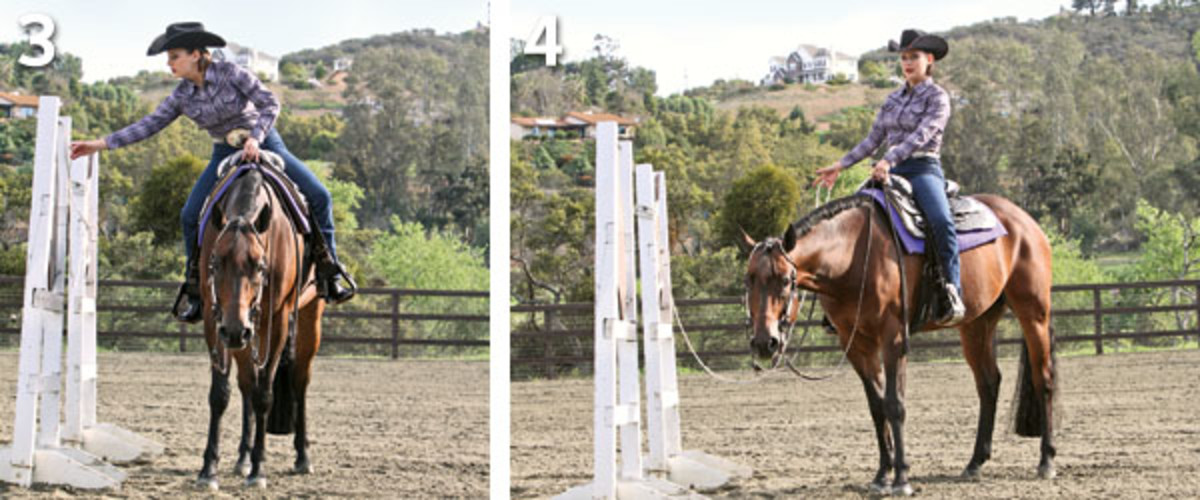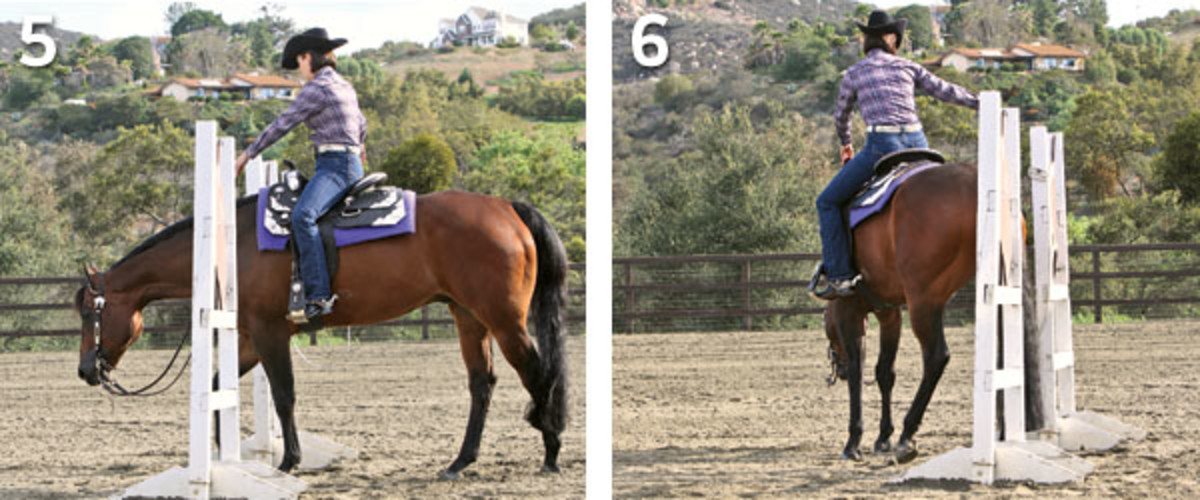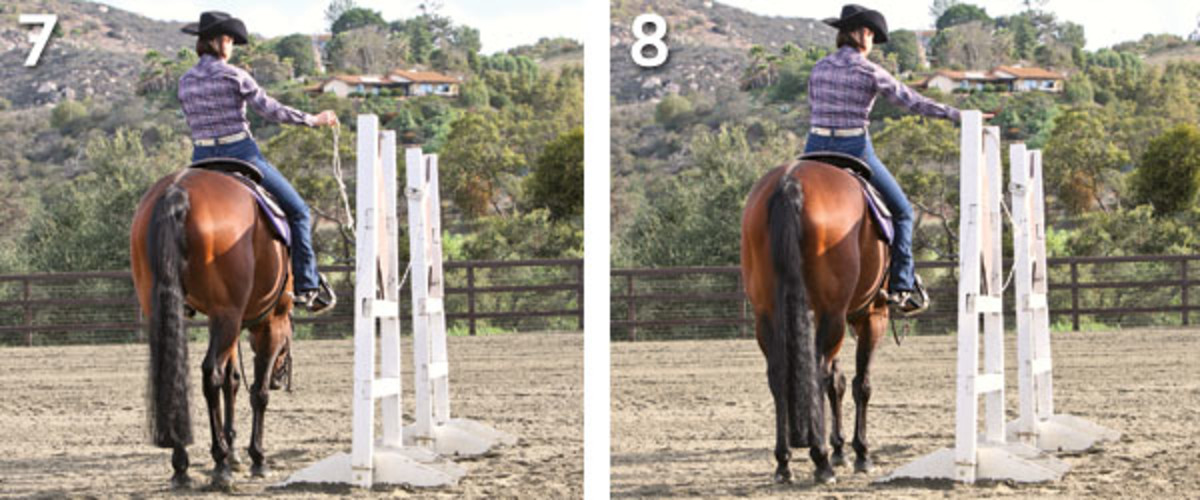The rope gate—a staple of almost any trail course at a show—presents an opportunity to both gain points and to lose them. It takes focus, patience, and finesse to end up on the positive side, once you’ve crossed through the standards. As well, a flawless execution sets you up in the right position to move to the next obstacle.
Here I’ll outline the correct approach to the gate, how to best work the obstacle, and tips for finishing.
1. In her approach to the gate, the rider ensures that her horse will be parallel to the gate by traveling at an angle and then straightening out her horse as she nears the gate. She starts to straighten her horse a couple strides before the gate, to ensure that her horse is parallel to the obstacle and that she keeps the correct distance between her horse and the standards.

2. The rider arrives at the gate with her horse parallel to the standards and the rope. She’s close enough to reach out to the rope to work the gate, but not so close that her horse might hit a standard when she maneuvers his body around to prepare to pass through. If her horse tries to hurry or anticipate her cues at any point when working this obstacle, she should stop, take a deep breath, count to five or 10, and then proceed. Making her horse wait for her cues and work step by step will ensure that she completes every portion of the obstacle with precision; rushing after a mistake only sets her up for more mistakes and penalties.
3. When the rider reaches for the rope, you can see that she doesn’t have to come unseated from the saddle to grasp the rope; she stays safely in the saddle, because her horse is the correct distance from the obstacle. If she were too far away from it, she’d put herself in the dangerous position of standing up in her stirrups and leaning far out over her horse’s side to reach the rope. That change in her position could unbalance her horse, pushing him farther away from the gate and allowing her to fall.

4. With the rope in her hand, the rider backs her horse up until his head is at the center of the gate’s opening. She then uses her right leg, placed slightly behind the cinch, to push her horse’s hip to the left, one step at a time. She’ll continue to move his hips to the left until her horse is perpendicular to the standards and positioned to pass squarely through them. She can use her hands to steer her horse’s shoulders as needed, but the movements should be minimal to avoid distracting the judge.
5. As the rider passes between the standards, she keeps her horse on a straight path. If she pushes his shoulders, body, or hips in either direction, she’ll set him up to hit a standard, and her horse won’t be in position to finish the obstacle. Unless she’s schooling her horse, she’ll keep moving forward to maintain her momentum.

6. When the horse’s hips have just passed through the standards, the rider stops and pushes his hip to the left, with pressure from her right foot just behind the cinch, to align the horse with the gate. This is where timing and patience are essential: If she moves the horse’s hip too soon, she’ll hit a standard and be penalized; if she’s too late, she’ll be too far from the gate to safely place the rope on the correct standard.
7. The horse’s hips are clear of the standards, the horse stands parallel to the gate, and the pair is an appropriate distance from the obstacle—not too close and not too far, just like in Photo 3.

8. The rider backs the horse a few steps to align the horse’s right shoulder with the standard, where she’ll replace the rope and complete the obstacle. In a more advanced course, there might be a pole to navigate between the standards. Add this element to practice at home to work on your timing and patience and increase your skills. Further, you’ll sometimes be required to work the gate from the off side. Look for an upcoming installment of Private Lesson for insights on swapping rein hands and working in the opposite direction.
Jill Newcomb, San Marcos, California, is a lifelong horsewoman and an AQHA judge. She specializes in all-around events and has successfully coached and shown world champions and All American Quarter Horse Congress winners. Learn more about Newcomb’s program at jillnewcomb.com.






